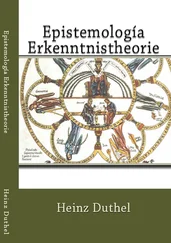Finally, one rule of thumb that I've found helpful: someone who goes around claiming to be enlightened (or dropping hints to that effect) probably isn't — at least not in the sense the Buddha had in mind.
What are some good beginning books on Buddhism?
* Buddhist Dictionary, by Nyanatiloka Mahathera (Kandy: Buddhist Publication Society, 1980). A classic handbook of important terms and concepts in Theravada Buddhism. A valuable reference for newcomers and veterans, alike.
* Buddhist Religions: A Historical Introduction (fifth edition) by R.H. Robinson, W.L. Johnson, and Thanissaro Bhikkhu (Belmont, California: Wadsworth, 2005). An excellent introductory college-level text that traces the evolution of all the major schools of Buddhism from their beginnings to the present day.
* Eight Mindful Steps to Happiness by Ven. Henepola Gunaratana (Boston: Wisdom Publications, 2001). An excellent guide to bringing the eightfold path into one's daily life.
* The Experience of Buddhism: Sources and Interpretations (second edition) by John S. Strong (Belmont, California: Wadsworth, 2002). A very useful anthology of excerpts from key Buddhist texts representing all the major schools of Buddhism. Although intended primarily as a companion to Robinson & Johnson's The Buddhist Religion (fourth edition) (see Buddhist Religions, above), it stands well on its own.
* Mindfulness in Plain English by Ven. Henepola Gunaratana (Boston: Wisdom Publications, 1992). A clear and helpful introduction to the practice of mindfulness meditation.
* Noble Strategy: Essays on the Buddhist Path by Thanissaro Bhikkhu (1999; available from Metta Forest Monastery). A fine collection of introductory essays, which are also available individually here on the website.
* Refuge: An Introduction to the Buddha, Dhamma, & Sangha by Thanissaro Bhikkhu (Geoffrey DeGraff) (1996; Available from Metta Forest Monastery). A collection of short essays and readings from the Pali suttas that explain the basic principles of living and practicing the path of Dhamma.
* What the Buddha Taught by Walpola Rahula (New York: Grove Press, 1986). An overview of the teachings of Theravada Buddhism, including chapters on each of the Four Noble Truths, along with excerpts from selected suttas and the Dhammapada. For several decades, a standard introductory text. Readily available at many bookstores.
* See also "Beginnings," which includes suggested readings on beginning meditation practice.
Where can I find a copy of the complete Pali canon (Tipitaka)?
Print editions:
If you're thinking of purchasing your own printed copy of the Tipitaka, be forewarned: the Pali canon is huge; owning a complete set is a serious commitment. The Pali Text Society's edition of the Tipitaka (English translation) fills over 12,000 pages in approximately fifty hardbound volumes, taking up about five linear feet of shelf space, and costing about US$2,000. Moreover, a few of the more obscure books in the Tipitaka are simply unavailable in English translation, so if you really must read the entire Tipitaka, you'll just have to learn Pali. The PTS has for over a century been the leading publisher of the Tipitaka, both in romanized Pali and in English translation, but many of their translations are now badly out of date. Much better translations of several portions of the Canon are now available from other publishers. Here are my recommendations for printed translations that add up to a useful — if incomplete — version of the Tipitaka:
* Vinaya Pitaka. The Book of the Discipline, I.B. Horner, trans. (Oxford: Pali Text Society, 1993) [6 vols]. To study the many rules for bhikkhus and bhikkhunis that are scattered throughout the Vinaya Pitaka, see Thanissaro Bhikkhu's The Buddhist Monastic Code, Volume I: The Patimokkha Training Rules Translated and Explained and The Buddhist Monastic Code, Volume II: The Khandhaka Training Rules Translated and Explained
* Sutta Pitaka. An excellent anthology of selected suttas and texts from the five Nikayas is Handful of Leaves, Thanissaro Bhikkhu, trans. (Santa Cruz: Sati Center for Buddhist Studies, 2003) [4 vols.]. Translations from specific portions of the Nikayas include the following:
o Digha Nikaya: The Long Discourses of the Buddha (formerly titled Thus Have I Heard), Maurice Walshe, trans. (Boston: Wisdom Publications, 1987) [1 vol.]
o Majjhima Nikaya: The Middle Length Discourses of the Buddha, Bhikkhu Ñanamoli and Bhikkhu Bodhi, trans. (Boston: Wisdom Publications, 1995) [1 vol.]
o Samyutta Nikaya: The Connected Discourses of the Buddha, Bhikkhu Bodhi, trans. (Boston: Wisdom Publications, 2000) [2 vols.]
o Anguttara Nikaya: The Book of Gradual Sayings, F.L. Woodward and E.M. Hare, trans. (Oxford: Pali Text Society, 1994) [5 vols.] An excellent anthology of about one-fifth the entire Anguttara Nikaya is Nyanaponika Thera and Bhikkhu Bodhi's Numerical Discourses of the Buddha: An Anthology of Suttas from the Anguttara Nikaya (Walnut Creek, CA: Altamira Press, 1999).
o Khuddaka Nikaya (for a more detailed list, see the Khuddaka Nikaya page):
+ Khuddakapatha: Handful of Leaves (Vol. 4), Thanissaro Bhikkhu, trans. (Santa Cruz: Sati Center for Buddhist Studies, 2003) [1 vol.]
+ Dhammapada: Dhammapada: A Translation, Thanissaro Bhikkhu, trans. (Barre, Massachusetts: Dhamma Dana Publications, 1997; available from Metta Forest Monastery); The Dhammmapada: Pali Text and Translation with Stories in Brief and Notes, prose translation by Narada Thera (Buddhist Missionary Society, 1978; available from Pariyatti Books) [1 vol.]
+ Udana: The Udana and the Itivuttaka, John D. Ireland, trans. (Kandy: Buddhist Publication Society, 1998) [1 vol.]
+ Itivuttaka: Itivuttaka: This Was Said by the Buddha, Thanissaro Bhikkhu, trans. (Barre, Massachusetts: Dhamma Dana Publications, 2001) [1 vol.] or Handful of Leaves (Vol. 4), Thanissaro Bhikkhu, trans. (Santa Cruz: Sati Center for Buddhist Studies, 2003) [1 vol.]
+ Suttanipata: The Group of Discourses (2nd ed.), K.R. Norman, trans. (Oxford: Pali Text Society, 2001) [1 vol.]
+ Theragatha, Therigatha: Elders' Verses, prose translation by K.R. Norman (Oxford: Pali Text Society, 1992) [1 vol.]
+ Vimanavatthu, Petavatthu, Patisambhidamagga, Buddhavamsa, Cariyapitaka, Nettippakarana, Petakopadesa, Milindapañha: translations, of varying quality, are available from the PTS.
+ Apadana, Niddesa: I'm unaware of any English translations of these books.
* Abhidhamma Pitaka. The essence of Abhidhamma philosophy is contained in the first and last of the Abhidhamma's seven books; only rarely do scholars and students wade into the murky waters of the middle five. So, begin with these two books:
o Dhammasangani: Buddhist Psychological Ethics, Mrs. C.A.F. Rhys Davids, trans., 3rd ed. (Oxford: Pali Text Society, 1993) [1 vol.]
o Patthana: Conditional Relations, Ven. U Narada, trans. (Oxford: Pali Text Society, 1993) [2 vols.]
These books are difficult reading; you'll welcome the sober guidance of the Abhidhammattha Sangaha, a medieval commentary by Acariya Anuruddha. By far the best translation of this work is A Comprehensive Manual of Abhidhamma, translated and edited by Mahathera Narada and Bhikkhu Bodhi (Kandy: Buddhist Publication Society, 1993). [1 vol.]
Miscellaneous
What's the relationship between "dana" and "fundraising"?
They are entirely unrelated — or at least they should be. Alas, in recent years the notion of dana seems to have been co-opted by many Buddhist organizations in the West as just another fundraising gimmick, designed to appeal to our better nature. How many times have we read fundraising letters from Buddhist organizations that open with the familiar preamble: "Dana, or generosity, is the ancient tradition that has kept the Buddha's teachings alive for over 2,500 years..."? How many times have we seen long "wish lists" in these letters detailing exactly what material goods are needed? And how many times have we heard meditation centers ask for "suggested donations" to pay for their teachings? To my mind, these valiant efforts at drumming up material support for Buddhist causes only dampen the true spirit of dana, that weightless, heartfelt, and spontaneous upwelling of generous action that lies at the very root of the Buddha's teachings.
Читать дальше












